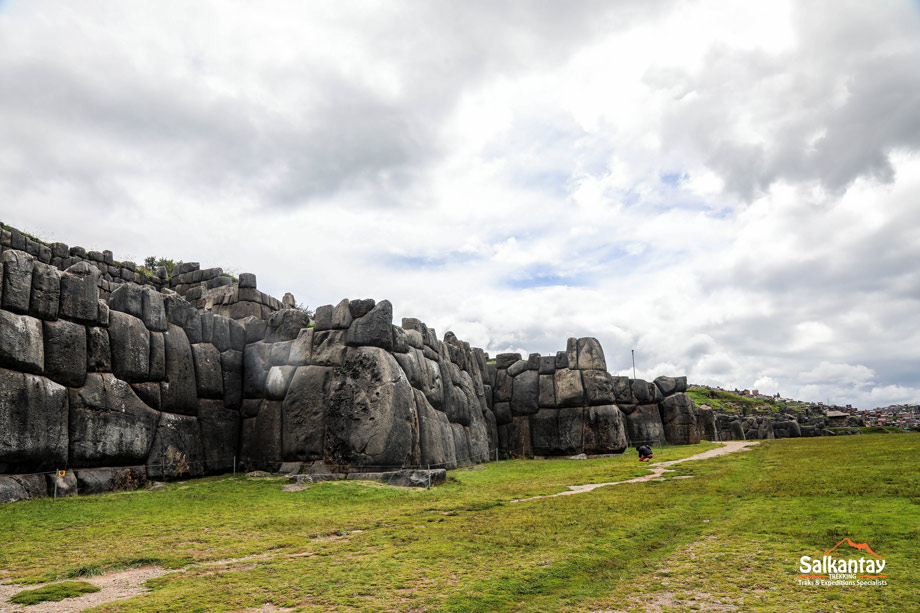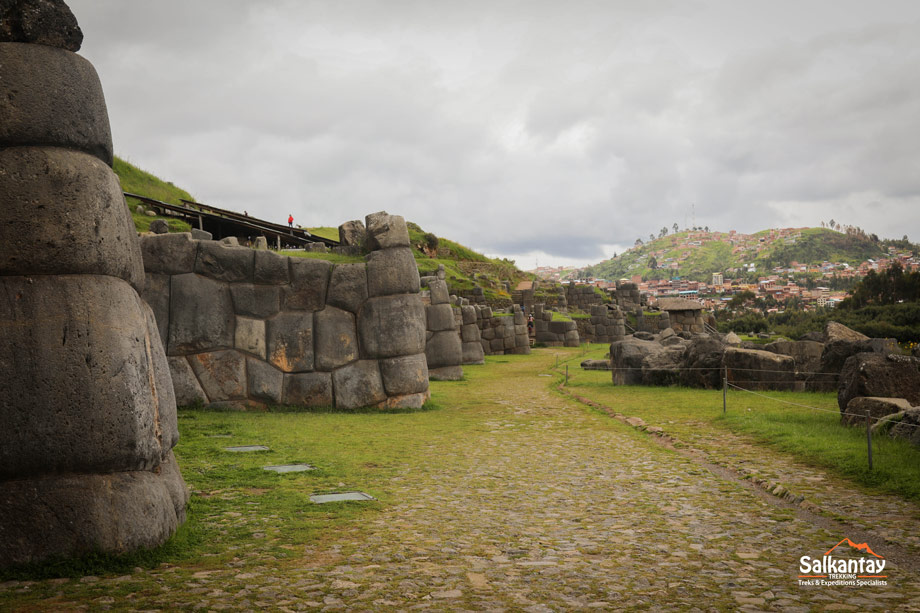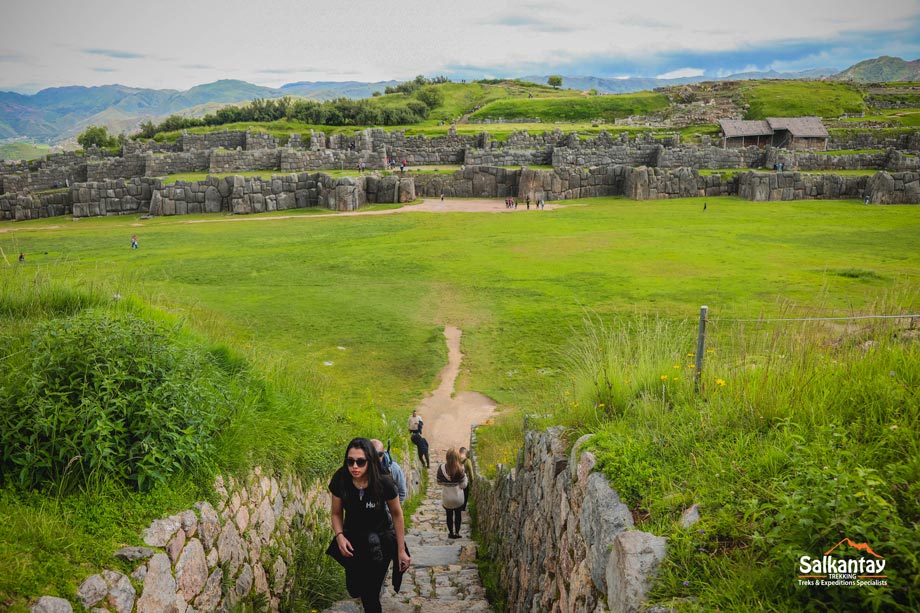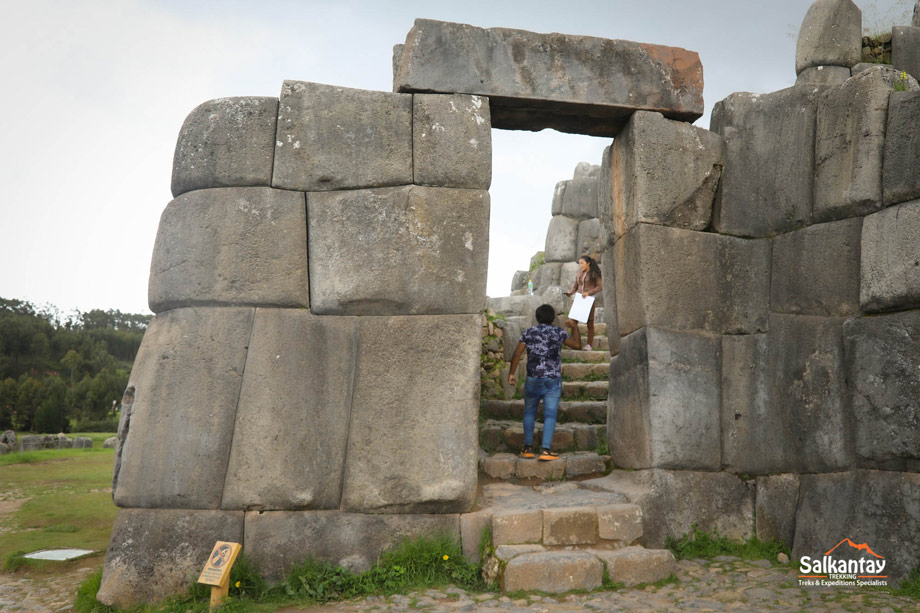There’s no doubt about it; the Incas constructed many incredible archaeological sites, the most famous of which is Machu Picchu. In and around the city of Cusco, there are many more, and one of the most spectacular is Sacsayhuaman.
This fascinating construction sits above Cusco at 3,700 masl. Building work began during the government of Inca Pachacutec in the 15th century and they say that over 20 thousand men worked on it by taking the huge stones over 20km. Some structures weigh a huge 125 tons. Quite amazing, don’t you agree?
What Does Sacsayhuaman Mean?
In the Quechua language, it means ‘place where the hawk is satiated’. Many think that it was a fortress due to its location, but others believe it was used for ceremonies. It could well have been both.

The Architecture
The structure includes sacred buildings like shrines and towers, as well as residences, warehouses, roads, and aqueducts. For this reason, you’ll see that the landscape and atmosphere resemble other sites from the era like Machu Picchu.
Inca Garcilaso de la Vega, one of the most famous Peruvian chroniclers, believed that Sacsayhuaman was the most impressive piece of architecture that the Incas built, and we tend to agree.

The history of the archaeological site Sacsayhuamán
Sacsayhuamán was built in the 15th century by Pachacutec, the ninth Inca emperor, between 1438 and 1471 during the height of the Inca civilization. It is believed to have been a ceremonial fortress with religious functions. Due to the size and weight of the stones used, some of which weigh several tons, its construction is particularly notable.
This enclosure has impressive architecture, with no use of mortar; the stones could fit perfectly together. Likewise, stones forming walls with perfectly carved and fitted edges have been found, and some stones have irregular and angular shapes that fit only the nearby stones.
In 1536, during the Spanish conquest, a significant battle took place at Sacsayhuamán between Inca forces led by Manco Inca and Spanish forces led by Diego de Almagro. The Incas caused great damage to the Spanish forces but were ultimately defeated. Unfortunately, many Inca structures, including Sacsayhuamán, were destroyed, and the stones were used to build Spanish buildings in Cusco. However, much of Sacsayhuamán’s original structure is still in use.
Currently, Sacsayhuamán is still an important site for celebrating Inca festivals. Every year on June 24th, Inti Raymi, the Inca ceremony in gratitude to the Sun God Inti, is celebrated at Sacsayhuamán. Sacsayhuamán continues to captivate visitors and archaeology scholars as an impressive testament to the advanced engineering and architecture of the Incas
What role did Sacsayhuaman play during the Inca civilization?
Sacsayhuaman served two roles during the Inca era. Firstly, it functioned as a defensive military fortress due to its strategic location, providing surveillance advantages against potential invasions and accommodating military troops. Additionally, it had a ceremonial and religious role, as historical accounts reveal its use in religious ceremonies, rituals, and celebrations related to the god Inti (Sun). Sacsayhuaman is a symbol of power and technical prowess that persists today.
Architecture of Sacsayhuaman
The structure comprises sacred buildings such as shrines and towers, as well as residences, warehouses, roads, and aqueducts. For this reason, you will notice that the landscape and atmosphere resemble other sites of the time, such as Machu Picchu.
Inca Garcilaso de la Vega, one of the most famous Peruvian chroniclers, believed that Sacsayhuaman was the most impressive piece of architecture built by the Incas, and we tend to agree.
Architectural Features
Stone Blocks
One of the most astonishing aspects of Sacsayhuaman is the size and weight of the stones used in its construction. Some of these stones are colossal, weighing several tons. These massive stones were carved and transported from distant quarries to the construction site.
Assembly Technique
The assembly technique of the stones in Sacsayhuaman is impressive. Despite the irregular and uniquely shaped stones, they fit together perfectly without using mortar. The Incas achieved remarkable precision in carving and arranging the stones, creating solid and resistant walls.
Zigzagging Shape
The walls of Sacsayhuaman have a distinctive zigzagging shape, which some suggest resembles the head of a puma, a sacred animal in Inca mythology. This design served aesthetic purposes and had defensive functions by complicating the entry of potential invaders.
Terraces and Platforms
Sacsayhuaman includes terraces and platforms that serve as additional structures. These terraces not only provided spaces for ceremonies and rituals, but could also have had agricultural functions by allowing the cultivation of plants on the hillside.
Subterranean Foundations
Sacsayhuaman has extensive subterranean foundations discovered to help stabilize the structure. These foundations, along with careful engineering, contributed to the fortress’s strength and durability.
Use of Courts and Plazas
The design of Sacsayhuaman includes courts and plazas, some of which have ceremonial and social purposes. These open spaces were used for public events and important rituals.
Height and Weight of Stones
The stones used in Sacsayhuaman vary in size and shape, from massive blocks to smaller stones. The diversity of sizes contributes to the complexity and beauty of the structure. Some vertical stones in Sacsayhuaman reach impressive heights, ranging from around 2 meters to over 9 meters. The weight of the stones used is also remarkable, ranging from several tons to over 100 tons, with some exceeding 200 tons.
How to Get There
As it’s so close to the city of Cusco, it can be nice to hike up there on a sunny day, which will take around 45 minutes. Alternatively, you can get a taxi that takes only 10 minutes. You’ll also find that it’s included in the City Tour if you wish to visit other sites on the same afternoon.
Keep in mind that you will need to purchase the Boleto Turistico (Tourist Ticket) either at one of the sites included or at specific points in the city

What Will You See There?
From the area itself, you get a wonderful view over all of Cusco. You can see the peaks of towering mountains, including Ausangate, Pachatusan, and Cinca. These were actually sacred to the Incas.
The complex itself also includes a lot of interesting parts that you can spend the whole day exploring. Let’s take a look at a few.
The Towers – The walls are built in a zigzag formation, and the towers are placed along these. We know that in these areas there was plenty of water, and you can still see the aqueducts today.
The Walls – We’ve already noted that these were built in a zigzag. It’s incredible to see how perfectly the huge stones fit together. How they were put together is still a bit of a mystery nowadays because they weighed over 100 tons.
The Doors – You will see the classic Incan door structure at different points around the complex. The shape is always like a trapezium and each one has its own name.

The Incan Throne – K’usilluc Jink’ian, or the throne of the Inca is a seat or bench made from the stones. The symmetry of these structures is perfect.
Chincanas – These are underground tunnels or caves in
Sacsayhuaman. There are two and many visitors find it fascinating to walk
through the smaller one. Others have tried to get to the end of the longer one,
without success.
What is the best time to visit Sacsayhuaman?
The best time to visit the site is between March and October, which is the dry season here, so you don’t have to worry about rain. The gates are open from 7 am to 6 pm, and remember that you need the Tourist Ticket. You will be very impressed by the gigantic structures and architecture if you decide to visit during your trip.
It’s also important to mention that every June 24th, Inti Raymi or the Festival of the Sun is celebrated, which is a very important date of worship to the God Inti and is related to the winter solstice in the South American hemisphere.
Fun Facts
Intricate Engineering
The precision with which the massive stones in Sacsayhuaman are carved and fit together is so precise that not even a sheet of paper can be inserted between the stones. The complexity of this engineering is impressive and has baffled archaeologists for a long time.
Puma Shape
The design of the zigzagging walls of Sacsayhuaman is believed to represent the head of a puma, a sacred animal in Inca mythology. The puma symbolizes strength and power, and this design choice could have had ceremonial and religious meanings.
Inti Raymi Celebration
Every June 24th, Sacsayhuaman is the main stage for the celebration of Inti Raymi, an ancient Inca festival dedicated to the Sun God (Inti). This celebration attracts visitors from around the world and recreates traditional Inca ceremonies.
Battle of the Stones
During the Spanish conquest, Sacsayhuaman was the scene of a fierce battle between the Incas and the Spanish conquistadors in 1536. It is said that the stones used in the fortress were thrown against the Spanish forces, causing significant damage.
Altar of Sacrifices
Some areas of Sacsayhuaman are believed to have been used as altars for religious ceremonies and possibly human sacrifices. However, evidence of human sacrifices at this location is disputed and still debated among scholars.
Subterranean Foundations
Extensive subterranean foundations have been discovered beneath the surface of Sacsayhuaman. These foundations are part of a more complex structure and demonstrate the careful planning of the Incas to ensure the stability of the fortress.
Symbol of Cusco
Sacsayhuaman is considered a symbol of the city of Cusco and is one of the most visited archaeological sites in Peru. Its imposing presence and historical significance attract tourists and scholars from around the world.
These fun facts highlight the cultural, architectural, and ceremonial richness of Sacsayhuaman, making this site a historical marvel that has endured through the centuries.
The best time to visit the site is between March and October. This is the dry season here, so you don’t need to worry about rain. The doors are open from 7 am to 6 pm and remember that you need the Tourist Ticket. You’ll be very impressed by the giant structures and architecture if you decide to visit during your trip.











Leave A Reply